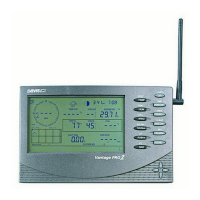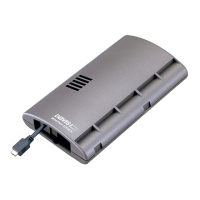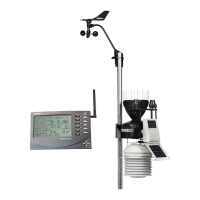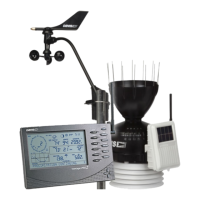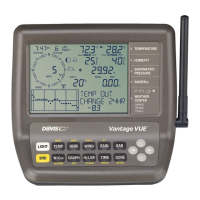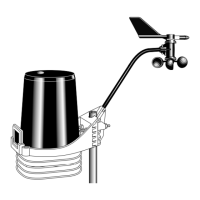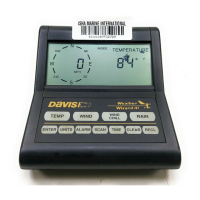Weather Data Measured & Calculated
20
units (inches or millimeters) at the time it is displayed. Converting at display
time reduces possible compounded rounding errors over time.
Four separate variables track rain totals: “rain storm”, “daily rain”, “monthly
rain”, and “yearly rain”. Rain rate calculations are based on the interval of
time between each bucket tip, which is each 0.01'' rainfall increment or 0.2
mm.
Barometric Pressure
The weight of the air that makes up our atmosphere exerts a pressure on the
surface of the earth. This pressure is known as atmospheric pressure. Gener-
ally, the more air above an area, the higher the atmospheric pressure, this, in
turn, means that atmospheric pressure changes with altitude. For example,
atmospheric pressure is greater at sea-level than on a mountaintop. To com-
pensate for this difference and facilitate comparison between locations with
different altitudes, atmospheric pressure is generally adjusted to the equivalent
sea-level pressure. This adjusted pressure is known as barometric pressure. In
reality, the Weather Envoy measures atmospheric pressure. When you enter
your location’s altitude in Setup Mode, the Weather Envoy stores the neces-
sary offset value to consistently translate atmospheric pressure into barometric
pressure.
Barometric pressure also changes with local weather conditions, making baro-
metric pressure an extremely important and useful weather forecasting tool.
High pressure zones are generally associated with fair weather while low pres-
sure zones are generally associated with poor weather. For forecasting pur-
poses, however, the absolute barometric pressure value is generally less
important than the change in barometric pressure. In general, rising pressure
indicates improving weather conditions while falling pressure indicates deteri-
orating weather conditions.
Solar Radiation
Note: Requires optional solar radiation sensor (#6450, included on Vantage Pro Plus
weather stations).
What we call “current solar radiation” is technically known as Global Solar
Radiation, a measure of the intensity of the sun’s radiation reaching a horizon-
tal surface. This irradiance includes both the direct component from the sun
and the reflected component from the rest of the sky. The solar radiation read-
ing gives a measure of the amount of solar radiation hitting the solar radiation
sensor at any given time, expressed in Watts /sq. m (W/m
2
).
Note: The solar radiation sensor measures energy received in the spectral band between
400 and 1100 nm.
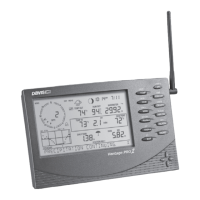
